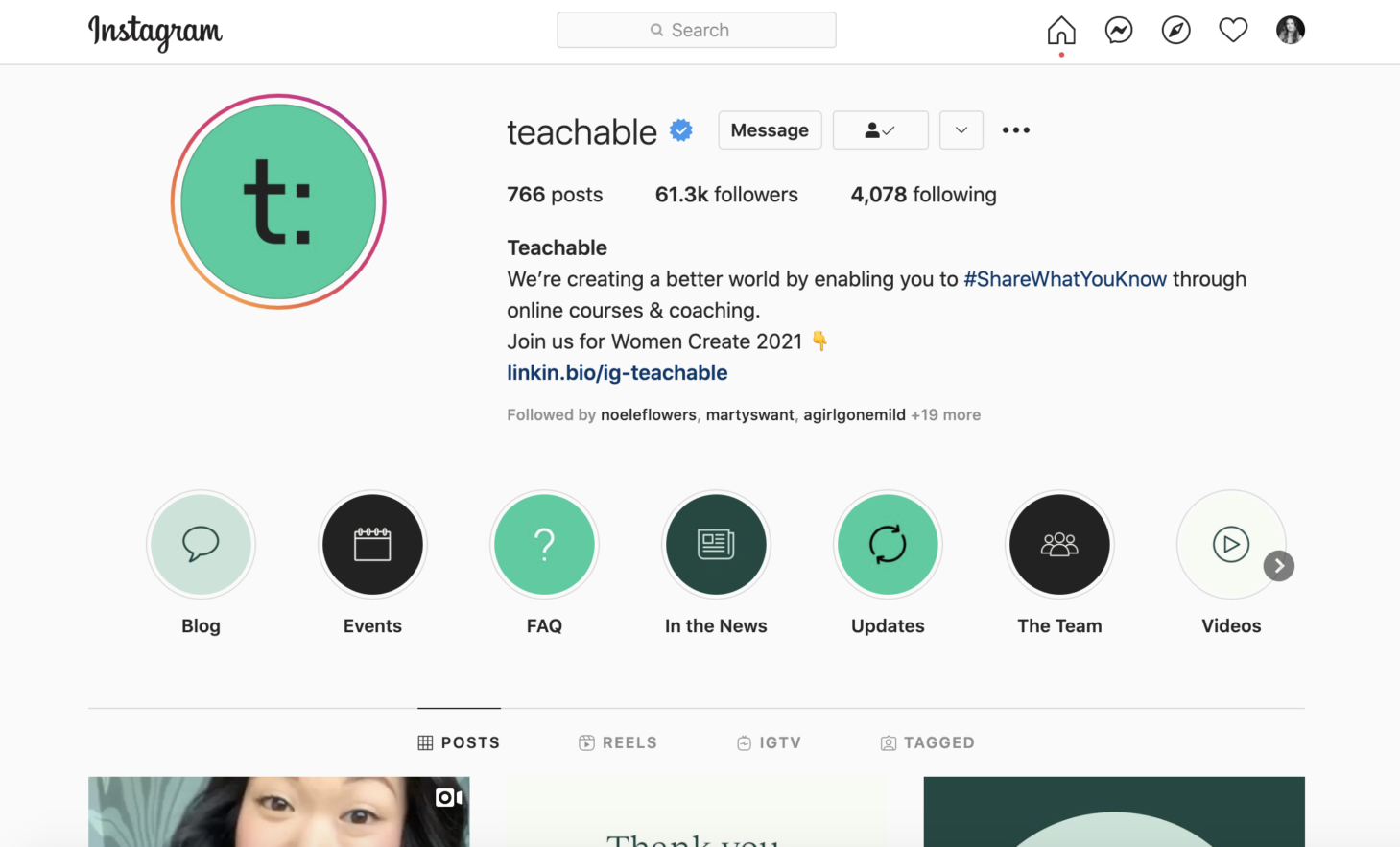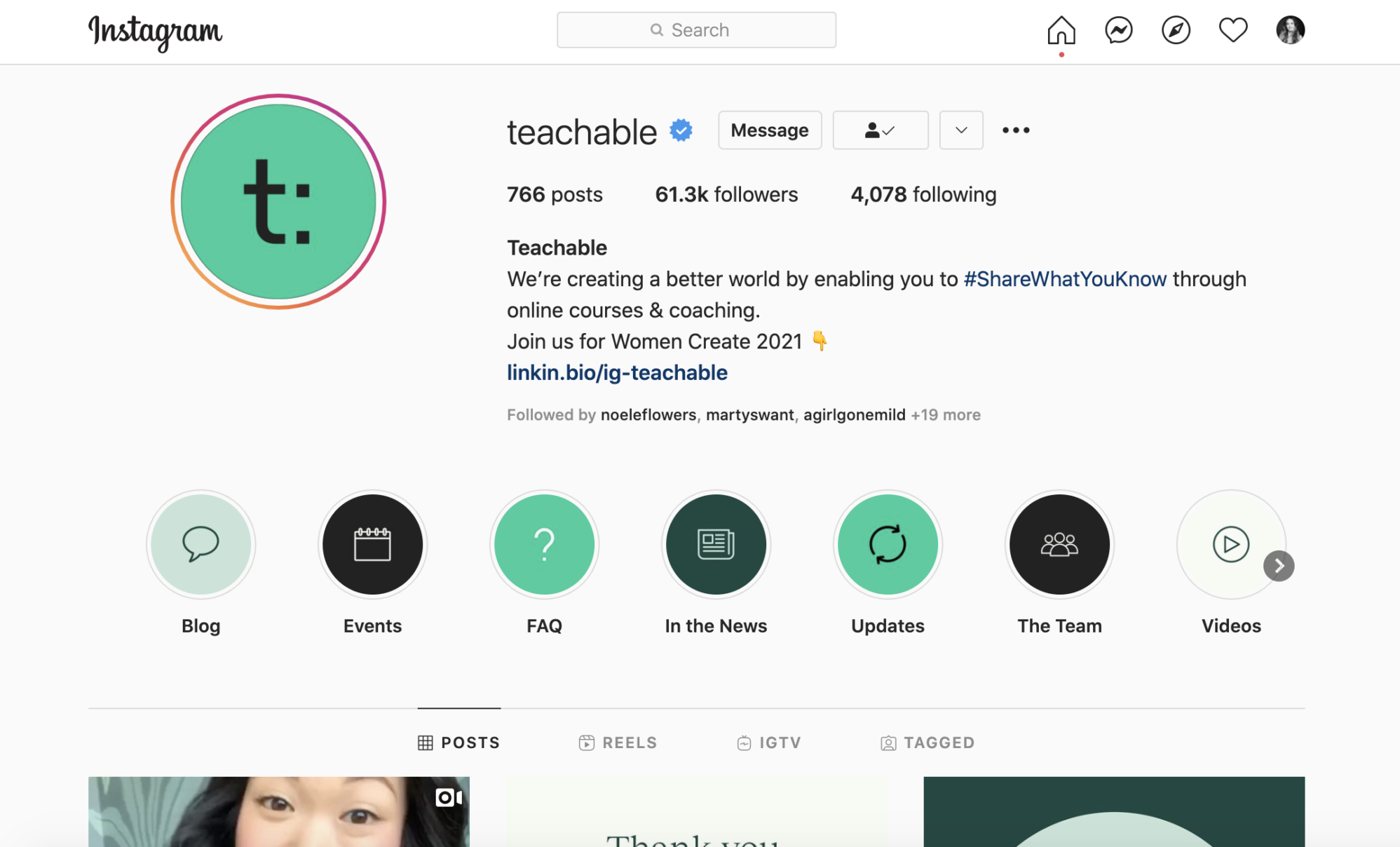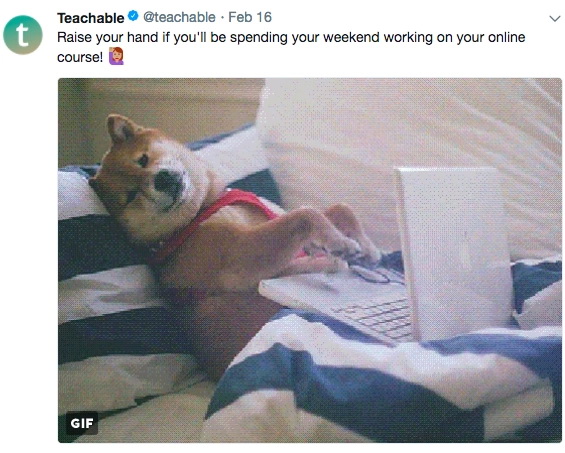How to use Twitter effectively as an online entrepreneur


Navigating Twitter as an online business owner can be tricky to navigate. Finding the balance between relatable, self-promotional, and cat gifs can be a bit of an art.
But there’s one thing for sure: a ton of course creators have mastered Twitter.
Here I was, thinking that Twitter was dying, only to find that dozens of online course creators are not only using Twitter as their primary social media platform, but their audiences are growing exponentially on the platform.
If used strategically, Twitter can be great for building your brand, growing your audience, and making sales.
The Basics of Using Twitter
While you might use Twitter a little differently depending on your niche and target audience, your foundation will largely be the same. There are some steps you need to take to set yourself up for success, and they’re pretty straightforward. In fact, if you already have a Twitter account, you may find that you’ve already done all of this.
Setting up Your Profile
The first thing to consider when setting up your Twitter profile is your branding. If you already have a business, this step should be easy. You can use your logo as your header image, and a picture of yourself as your profile images.


Pro tip: If you’re using multiple social media sites to promote your business, consider using the same profile picture across them all. This helps make you instantly recognizable to your audience.
Your User Bio
Your user bio is important real estate on your Twitter account. This is where you should talk about the most exciting parts of your brand and who you are. You’ve got limited space to make an impact, so really think about the parts of your business that get people excited.
Your bio is also one of three places where you can include a link, which means you can include a call-to-action. If you didn’t already know, a call to action is language that provokes a response in your audience. In this case, we want their response to be clicking a link and taking your audience to your preferred online property (maybe your course sales page, lead magnet, or blog post).
Creating a Pinned Tweet
The final thing to consider when you’re setting up your Twitter profile is what you want your pinned tweet to be.
Twitter allows you to pin one tweet to the top of your page, and that’s going to act as a first impression for people stumbling on your profile for the first time. How to pin your Tweet on Twitter
When you’re choosing or creating a pin to tweet, ask yourself what your goal with your pinned tweet is:
-
Do you want people to click through to your website?
-
Are you hoping people will follow you?
-
Are you trying to get people to retweet?
Depending on your goal, the type of tweet you pin might vary. Personally, I like the pin very relatable tweets in hopes that people will retweet. When you get retweets you’re maximizing the number of eyes on your account and increase your chance of future followers and clicks to your website.
I’ll be talking about relatable content a lot later on in this post, and what I mean by that is tweets that most people in your target audience will instantly appreciate because it’s referring to something they’ve all been through.
For example, I’m a blogger. On my personal account, my pinned tweet is usually something that’s universally true for bloggers. For example, my previous pinned tweet said, “Another blogger’s success is not your failure. In an industry as new as ours, a win for one blogger is a win for us all.”
That tweet is true for every single blogger, and therefore it racked up a lot of likes and retweets, and those retweets translated into followers.
Growing Your Following
Your main goal with social media is to grow followers within your target audience. As tempting as it might be to go and buy 10,000 followers off the bat, those bot followers aren’t going to do you any good.
Instead, you want to practice targeted strategies to increase your following.
Follow people in your industry
It is social media, after all, so you need to be social yourself before others are social with you. Focus on following users in your target audience, thought leaders in your niche, and your peers. Chances are, if you’ve filled out your bio and are truly within the same niche as the people you followed, many will follow back.
It’s important to follow a mix of the “big names” in your industry, as well as the up and comers. The bigger the influencer, the less likely they’ll follow back simply because they get so much engagement and notifications, a lot of them will fall through the cracks.
The best way to grow your audience is by following people who will be interested in your tweets and continue to post quality tweets throughout the day (we’ll talk about automating this later!)
Ultimately you want to be creating a community of like-minded individuals who you can learn from and who can learn from you, it’s a longer game but it is well worth it in the long run.
Be consistent
Now, you don’t have to be tweeting a dozen times a day to have success on Twitter, but you should be tweeting somewhat regularly. Your audience won’t be interested in following inactive accounts or accounts that only tweet three or four times a month.
Tweeting out once every day or two is plenty, and if you’re looking to accelerate your growth you can increase your tweeting tempo.
Get retweeted
I told you that the “relatable content” would come back into play. If you really want to grow quickly, your goal is to get as many eyes on your content as possible. The best way to go about that is to create content that’s designed to be retweeted.
Now, these tweets won’t look like what you usually send out.
Instead, you’re going to be hyper-focused on creating content that satisfies cliches within your niche. People like to feel special, and when they see a tweet that almost feels like it was written for and about them, they’re far more likely to retweet.
Types of tweets that get retweeted:
-
“Just _______ things.” There was a popular account called Just Girly Things that would tweet out stereotypical things girls could relate to. Now, almost every industry has content that fits that mold. “Just engineer things,” “Just distance runner things,” or “Just horticulturist things.” Here’s what those tweets look like:


-
Humblebrag tweets. Essentially, humblebrags are statements intended to draw positive attention that are veiled with a layer of self-depreciation. As a blogger I see a lot these humblebrag tweets with hundreds of retweets that sound something like this, “I envy anyone who is able to work 9-5, I wish I had it in me. Being your own boss is so hard.” Other bloggers see tweets like these and retweet them, often racking up dozens if not hundreds of retweets.
-
Gifs of any kind. On Twitter, you have the option to search their database of gifs and add them to your tweet. These are great because they’re eye-catching and because people love them. My tweets that include gifs get so much more engagement than my regular tweets that I often wonder why I don’t tweet exclusively in gifs.


Twitter Best Practices
Now, there is a lot to be said for automation, but there’s more to be said for authenticity. Luckily, you can marry the two and automate a lot, but still spend authentic time engaging on the platform.
On Twitter, automated tweets sending out links to your latest and greatest will be ignored if that’s all you ever tweet.
Your audience is quick to catch on to who is using Twitter to connect with people, and who is using Twitter to throw their own links into the void.
Of course, there’s no “right” or “wrong” way to use social media, but if you’re looking to maximize audience growth and conversions, you might want to follow a few of these tips:
-
Only use links to your site in around 40-50% of your tweets. Audiences catch on fast to who is only self-promoting and they’ll be quick to unfollow or mute you. Instead of sending out dozens of links out every day, strike a balance and for every link you tweet, retweet something relatable or ask your audience a question.
-
Respond to engagement. Twitter is a very social platform and one you can leverage to forge real connections with your audience. If people are tagging you in tweets or asking questions, make sure to respond. It goes a long way in making people feel connected to you.
-
Be relatable. Beyond being a business owner, you’re a real person with real interests and interesting ideas. Let that side of you show! People want to buy from people that they feel connected to, not just another internet marketer. Be yourself and let yourself tweet about things that aren’t necessarily part of your niche every now and then.
Course Creators Using Twitter Right
Now, of course, we’ve got our hall of fame. People to take inspiration from and whose strategies are worth studying. They’re not just looping their tweets on autopilot and ignoring any and all engagement. Instead, they’re curating their brand and growing their audiences.
Jamie Jensen
Jamie Jensen’s biggest strength on Twitter is using her account to really showcase her personality and connect with her audience.
She’s not just sending out promotional tweets (she definitely does that), but in addition, she’s also asking for advice from her audience, giving people a behind the scenes look into her life, and killing it in the emoji game.
This works so well because people see her tweets and feel like they’re coming from a real person, not just some marketing mind trying to sell something.
Jamie builds trust with her Twitter account, and trust is one of the most important elements in getting people to purchase from you.
Regina Anaejionu
Regina Anaejionu’s Twitter can be best summed up as “real-talk from your business bff.” She doesn’t sugar coat her thoughts and opinion when it comes to her industry, and her account is hyper-targeted towards entrepreneurs and business owners.
Despite this targeting, she still remains personable and relatable and comes off as a real person.
Another great thing about Regina’s account is she spends more time sharing other people’s content than her own. This creates goodwill in her community and helps strengthen her reputation as an authentic and genuine creator.
Laura Belgray
Laura Belgray is one of my favorite copywriters, and her Twitter account is one of my favorites to follow. She is hilarious but also full of great advice for her followers.
Her tweets marry her big personality and her industry expertise. She’s another creator who does a great job promoting her own content without making it feel like she’s being overly promotional or salesy.
Nadine Rohner
Nadine Rohner’s account has beautiful branded imagery that makes her account feel cohesive. Her tweets are primarily a combination of tips, self-promotion, and helpful content from other people. Thrown into the mix, though, are relatable tweets and retweets that show her human side. After all, nobody is just their business.
Nadine also has pop culture references thrown into her tweets, which is great for increasing engagement. People are more likely to get excited and retweet content that references something they’ve been really into lately, like a band or movie.
Thomas Frank
Thomas Frank of College Info Geek uses Twitter to connect with his audiences. Between frequent AMA’s where he asks people to send in questions for him to answer and updating his followers on what he’s working on, Thomas’ use of Twitter is one of the most audience focused I’ve seen.
Dig Your Goals
Kortney from Dig Your Goals has an incredibly engaging Twitter account. The most important thing to note is that she’s active on Twitter, retweeting and responding without bots.
This goes a long way in helping further the idea that she’s a real person, not a stiff or scary corporation or salesperson.
Her use of gifs makes her account fun to scroll to, and she retweets interesting content from other people showing she’s not just in the Twitter game for herself.
Kaylyn Parker
Kaylyn Parker does an incredible job promoting her own content while still maintaining an account that looks like it’s run by a real person.
As far as authenticity goes, Kaylyn’s account is one of the best. At first glance, it looks like it could be run by anyone’s best friend, but taking a closer look, in between sharing anecdotes about her day and relatable memes, she’s offering valuable advice to her followers and promoting her content.
The seamless integration between her real life and her business is as much an art as it is a science, and it helps her establish a solid connection with her followers.